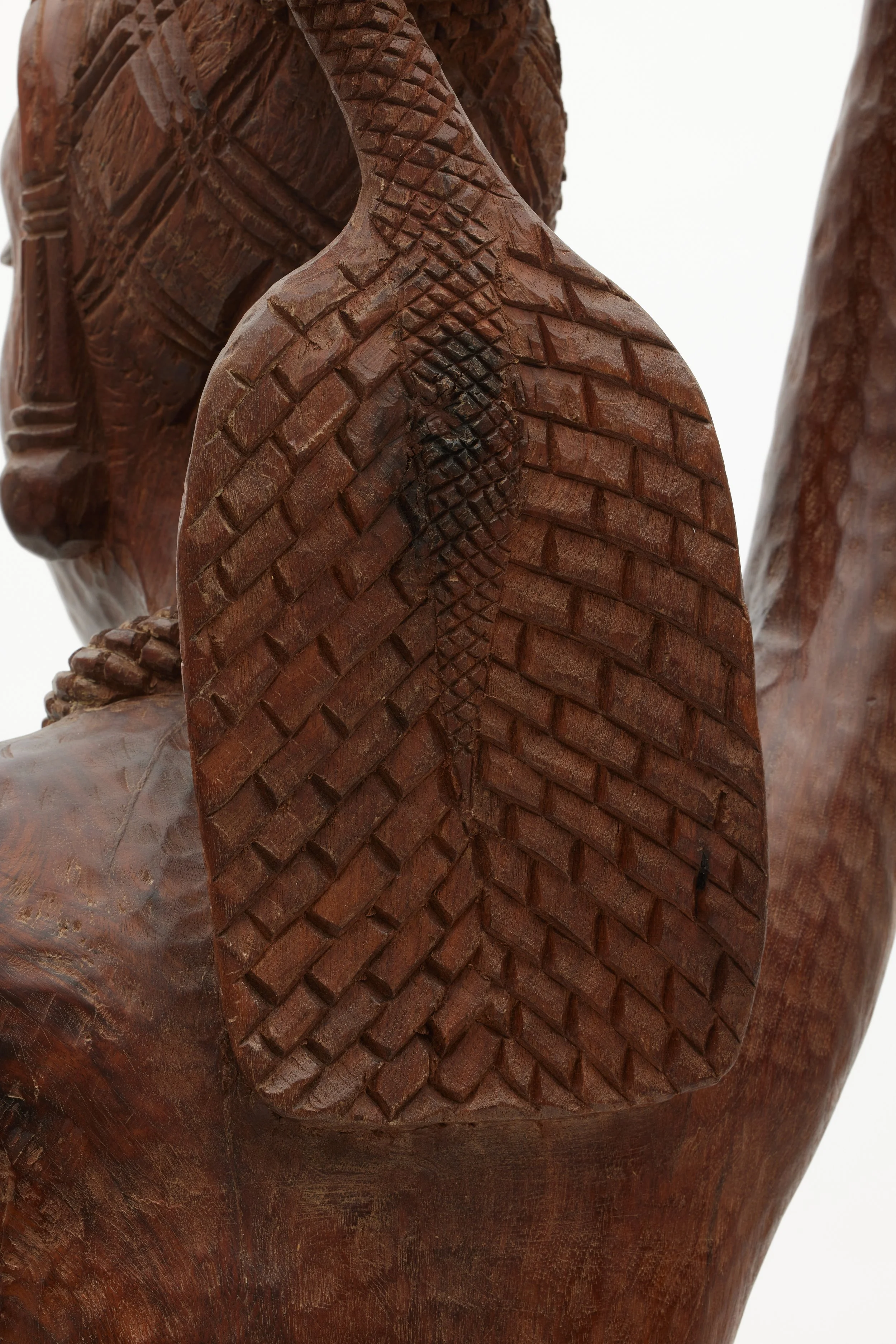BIO.
Originally from Nigeria in West Africa, Eboigbe grew up in the small town of Aba the son of a Benin chief.
Though his youth lacked opportunities and financial support for Eboigbe to study the arts, an understanding uncle supported his apprenticeship at age 17 for three years with Ben Aye, a famous Nigerian sculptor. Eboigbe also studied art at Lagos University, but did not receive a degree.
Eboigbe eventually found a studio in 1967 in Lagos. It was there where he met a lot of ambassadors who stopped in from nearby embassies. It was not long until The Nigerian Daily Times did a review, and he was discovered. Through the efforts of the Ford Foundation, the United States Information Agency and the American Embassy, Eboigbe was invited to come to America as a teacher and resident sculptor.
Although offered several posts, Eboigbe selected Indiana University in Bloomington, Indiana. He served as an artist-in-residence and teacher for twelve years, sponsored by Indiana University Foundation and the Department of Afro-American Affairs.
Eboigbe's preferred medium is wood. “It is alive, almost a piece of sculpture already,” he said. Eboigbe, whose name means ‘happy and innocent,’ sculpts in two styles, abstract and realistic.
Primarily, he works from imagery in his mind. Influences include Henry Moore, and Ben Aye. As his teacher, Ben Aye showed him how to do abstract work. Eboigbe found interest in sculpting smaller items, like African masks, as well as large abstract figurative works, standing 7 to 9 feet tall and weighing up to 450 pounds.
Tools he uses are handmade ebony mallets, chisels and an axe. In the abstract, he creates mainly female figures or animals. Realistic figures are often warriors, chiefs and women. Eboigbe recalls stories his grandfather told him and often translates them into sculpture.
After Indiana, he moved to Cincinnati in 1983 and continued to sculpt and show his art. Through the support of the office of then Governor Richard Celeste, Eboigbe landed a studio at the University of Cincinnati’s Tangeman University Center. Subsequently, he had studios in a house owned by the university on Lafayette Ave., on Short Vine, in the Emery Building and eventually his home, where he now resides in Cincinnati, Ohio.
